This article was medically reviewed by Luba Lee, FNP-BC, MS and by wikiHow staff writer, Megaera Lorenz, PhD. Luba Lee, FNP-BC is a Board-Certified Family Nurse Practitioner (FNP) and educator in Tennessee with over a decade of clinical experience. Luba has certifications in Pediatric Advanced Life Support (PALS), Emergency Medicine, Advanced Cardiac Life Support (ACLS), Team Building, and Critical Care Nursing. She received her Master of Science in Nursing (MSN) from the University of Tennessee in 2006.
There are 12 references cited in this article, which can be found at the bottom of the page.
This article has been viewed 39,645 times.
Dealing with your period can be stressful and difficult. If you’re blind or visually impaired, you may be worried about how to recognize when your period has arrived or how to use products like pads and tampons correctly. Fortunately, with a little bit of practice and help from experienced friends, loved ones, and teachers, you can deal with all these issues. Get familiar with your individual period symptoms and practice using the products you need. If you have difficult period symptoms, such as cramps, you can try home remedies or work with your doctor to manage them.
Steps
Recognizing Your Period
-
1Watch for common signs that your period is coming. You may experience signs and symptoms in the days leading up to your period that can be helpful in letting you know when it’s coming. Pay attention to the way you feel before each period starts so that you can begin to recognize regular patterns of symptoms. You can also keep track of your symptoms so that you know when to expect them—for example, you might typically start feeling cramps 2-3 days before your period starts.[1] Before your period, you may notice symptoms such as:[2]
- Feeling bloated
- Tender or painful breasts
- Changes in your mood, such as feeling irritable, anxious, or down
- Pimples or acne breakouts
- Cramps or pains in your abdomen or back
-
2Check for sticky vaginal discharge with a metallic smell. It’s normal to have a little discharge from your vagina even when you’re not having your period. However, the bleeding and discharge you get during your period feels and smells different. Watch out for discharge that feels slightly sticky and has a faint, metallic scent.[3]
- Your period discharge will also eventually become much heavier than your regular discharge, although it may be very light during the first 1-2 days of your period.
- If you have some sight, you may be able to see that your discharge looks dark brown or red when your period starts.
Advertisement -
3Make note of what your period feels like. Once your period actually begins, you may develop a new set of symptoms that are different from what you feel in the days before your period starts. In addition to bleeding, pay attention to symptoms such as:[4]
- Cramps in your abdomen, back, or thighs
- Tiredness
- Nausea
- Headaches
- Stomach upset or diarrhea
- Lightheadedness
Tip: Period symptoms are different for everyone. For example, you may have very painful cramps, or you might not experience any pain at all. If you’re concerned about your symptoms, talk to your doctor.
-
4Track your menstrual cycle so you can guess when it’s coming. In addition to knowing the warning signs that your period is coming, it can help to have an idea of how far apart your periods tend to happen. For example, they may start every 28 days or every 30. Once your period starts, mark the first day down in a calendar or ask a family member or friend to do it for you. Do this every month until you have a sense of how many days tend to go by between the start of one period and the start of the next one.[5]
- You can also use an app to help you track your periods.[6] Some popular period tracking apps include Clue, Eve Tracker, and Flo.
- If you have really irregular periods, you might have to rely on other clues, like the symptoms you tend to get when your periods start.
Managing Your Hygiene
-
1Try different products until you find what works best for you. When it comes to period hygiene products, everyone has their own preferences! Ask a sighted friend or relative, or an experienced friend with a visual impairment, to help you pick out a few different products to try.[7]
- Some popular period hygiene products include pads and pantyliners, tampons, and menstrual cups. If you have really light periods, you can even wear specially designed period underwear, such as Thinx or HAPPYZ.[8]
- Once you’ve found some products you like, make sure you know the brand name and product name so you can find them again.[9]
-
2Have a family member or friend to show you how to use the products. Whatever kind of period products you choose, you may need a little practice to learn how to use them correctly. Ask a trusted friend or relative to show you the ropes.[10]
- For example, ask them to talk you through how to insert a tampon or how to unwrap a pad and put it in your underwear correctly. They can also teach you how to properly dispose of pads and tampons.
- You might find it helpful to talk to someone else with a visual impairment and get their advice on how to use your preferred product.
- Practice handling and using the items until you get comfortable with them.
-
3Put together a special period supply kit. Putting together a kit and keeping it with you can help you be prepared in case your period starts unexpectedly. Carry it with you in your purse or backpack so that it’s always on hand if you need it. Consider filling it with supplies like:[11]
- Pads, tampons, or pantyliners
- A washcloth or some gentle disposable wipes
- A change of underwear
- Stain-removing sticks or sprays in case of leaks
- Small baggies for disposing of sanitary napkins or tampons
- Pain relief medications to relieve cramps, such as ibuprofen (Motrin), naproxen (Aleve), or Pamprin
-
4Wear a panty liner for 2-3 days before you expect your period to start. It can be hard to tell when you’re spotting, or bleeding very lightly, at the beginning of your period. If you’re able to track your cycle and you think you know when your period is going to start, you can put panty liners or very light pads in your underwear for a few days beforehand to catch any light bleeding.[12]
- Panty liners can also be useful at the end of your period, since you may continue to bleed or spot very lightly for 1-2 days after your main flow has stopped.
-
5Change your pads or tampons on a regular schedule. After a while, you’ll probably get a sense of how often you need to change your pad or tampon. However, if you’re not sure what to feel for yet, it can be helpful to change your hygiene products regularly to prevent overflows and leaks. For example, try changing your pad once every 4 hours.[13]
- Depending on how heavy your flow is, you may need to change your hygiene products more frequently.
- If you use tampons, it can be helpful to wear a light pad or pantyliner at the same time to prevent leaks.[15]
Warning: Wearing a tampon for too long can put you at risk of developing a rare but dangerous condition called toxic shock syndrome. Never wear a tampon for more than 8 hours.[14]
-
6Check for signs that your pad or tampon is getting full. Your flow will not be the same throughout your entire period, and it may also vary from one period to another. While changing your hygiene products on a regular basis can be helpful, it’s also important to be able to feel the signs that they’re getting full and it’s time to change them out. For example:
- As your pad gets full, you may notice that it starts to feel heavy, squishy, or noticeably damp. You might also feel dampness around the edges of your underwear if it starts to leak.
- One easy way to tell if a tampon is ready to be changed is to give the string a gentle tug. If it starts to slide out easily, then the tampon is full and should be replaced.[16]
- You may also be able to feel dampness or a trickle of liquid from your vagina if your tampon begins to overflow.
-
7Ask a trusted friend to let you know if they notice stains or leaks. No matter how careful you are, accidents can happen. If you’re worried that you might leak and not notice it, ask a friend, family member, or teacher you trust to let you know if they see any obvious stains on your clothes.[17]
- If you do have a leak or an accident, try not to feel bad about it. It’s happened to everyone who gets a period at some point!
Coping with Period Symptoms
-
1Try over-the-counter pain medications to manage cramps. If you get a lot of pain with your periods, non-steroidal anti-inflammatory drugs (NSAIDs) can help. Try using a medication such as naproxen (Aleve) or ibuprofen (Motrin, Advil) to take the edge off your cramps.[18] Be sure to keep your medications organized and get a sense of what the pills feel like so that it’s easier for you to recognize them.
- Heat can also bring relief from period cramps. Try soaking in a warm bath or holding a hot water bottle or heating pad against your abdomen or lower back.
Tip: A gentle massage can sometimes help relieve period cramps. Gently press or rub on your abdomen, or ask a friend to do it.[19]
-
2Practice stress-relieving techniques to help you feel better. Periods can be stressful, and being stressed may make your cramps and other symptoms worse. While you’re having your period, try to rest and relax as much as possible.[20] Do soothing activities like meditation or yoga. You might also find it helpful to:
- Listen to peaceful music.
- Read a relaxing book.
- Spend time outdoors—if you don’t feel up to walking, just sit outside in the fresh air.
- Hang out with friends and family.
- Take a soothing bath.
-
3Ask a friend or relative for support and advice. If you’re feeling anxious about your period or just need advice, it can be a big help to talk to friends and family members who have been through it before. If possible, chat with somebody who is also blind or visually impaired, since they will understand better than anyone what you are going through.
- A friend or loved one may be able to recommend pain relief products or techniques that work particularly well for them.
- If you have any other concerns about dealing with your period, they might also be able to help put your mind at ease. For example, you might say to a close friend, “I’ve been thinking about trying tampons, but I’m worried I won’t be able to tell if I’m putting them in right. Do you have any tips on how to deal with that?”
- Don’t be afraid or embarrassed to ask for help if you’re having bad symptoms. For example, say something like, “Mom, my period started, and I’m having terrible cramps. Do we have something I could take for this?”
-
4Talk to your doctor if you have severe period symptoms. If your cramps are bad enough to disrupt your daily life during your period, or if you have other severe symptoms, such as extremely heavy bleeding, talk to your doctor.[21] They can recommend treatments that may help, like hormonal birth control medications.[22]
- Some hormonal birth control medications can reduce the number of periods you have or eliminate them altogether.[23] These may be a good option for you if you find your periods extremely difficult to manage. However, you should talk about the risks and benefits of these medications with your doctor before making a decision.
References
- ↑ http://catchthesewords.com/teaching-blind-child-manage-period/
- ↑ https://www.nhs.uk/conditions/periods/
- ↑ http://catchthesewords.com/teaching-blind-child-manage-period/
- ↑ https://medlineplus.gov/menstruation.html
- ↑ https://www.familyconnect.org/info/browse-by-age/grade-schoolers/growth-and-development-grade-schoolers/menstruation/1235
- ↑ http://catchthesewords.com/teaching-blind-child-manage-period/
- ↑ https://www.familyconnect.org/info/browse-by-age/grade-schoolers/growth-and-development-grade-schoolers/menstruation/1235
- ↑ https://www.verywellhealth.com/best-period-panties-4177091
- ↑ http://catchthesewords.com/teaching-blind-child-manage-period/
- ↑ https://www.familyconnect.org/info/browse-by-age/grade-schoolers/growth-and-development-grade-schoolers/menstruation/1235
- ↑ https://www.familyconnect.org/info/browse-by-age/grade-schoolers/growth-and-development-grade-schoolers/menstruation/1235
- ↑ https://www.familyconnect.org/info/browse-by-age/grade-schoolers/growth-and-development-grade-schoolers/menstruation/1235
- ↑ https://www.familyconnect.org/info/browse-by-age/grade-schoolers/growth-and-development-grade-schoolers/menstruation/1235
- ↑ https://www.nhs.uk/conditions/toxic-shock-syndrome/
- ↑ http://www.theperiodblog.com/how-to-guides/how-to-tell-when-to-change-your-tampon/
- ↑ http://www.theperiodblog.com/how-to-guides/how-to-tell-when-to-change-your-tampon/
- ↑ https://www.familyconnect.org/info/browse-by-age/grade-schoolers/growth-and-development-grade-schoolers/menstruation/1235
- ↑ https://www.mayoclinic.org/diseases-conditions/menstrual-cramps/diagnosis-treatment/drc-20374944
- ↑ https://www.medicalnewstoday.com/articles/324484.php
- ↑ https://www.mayoclinic.org/diseases-conditions/menstrual-cramps/diagnosis-treatment/drc-20374944
- ↑ https://www.mayoclinic.org/diseases-conditions/menstrual-cramps/symptoms-causes/syc-20374938
- ↑ https://www.mayoclinic.org/diseases-conditions/menstrual-cramps/diagnosis-treatment/drc-20374944
- ↑ https://www.mayoclinic.org/healthy-lifestyle/birth-control/in-depth/birth-control-pill/art-20045136
- ↑ https://helloclue.com/articles/cycle-a-z/menstruating-while-disabled
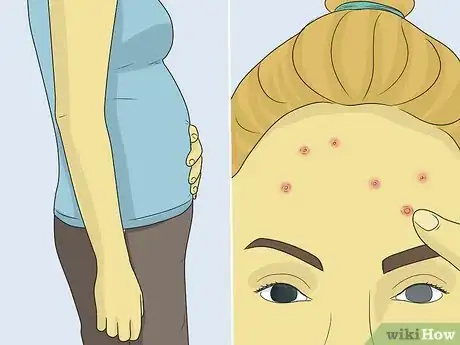
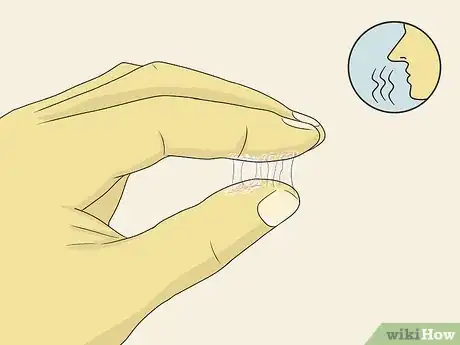
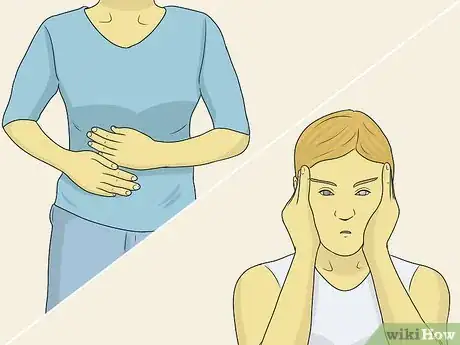
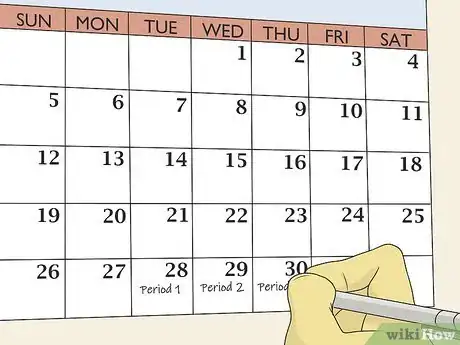



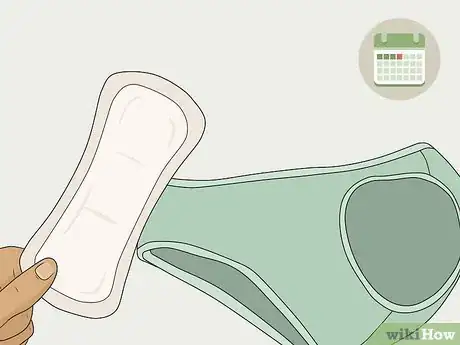
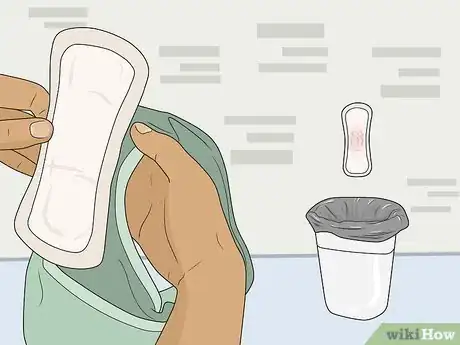
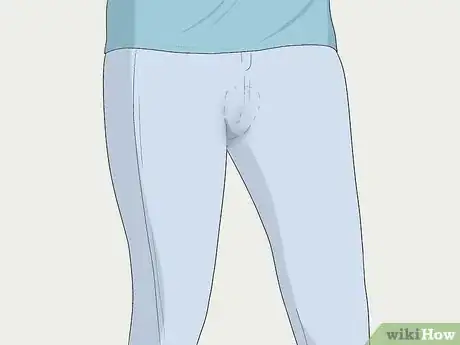

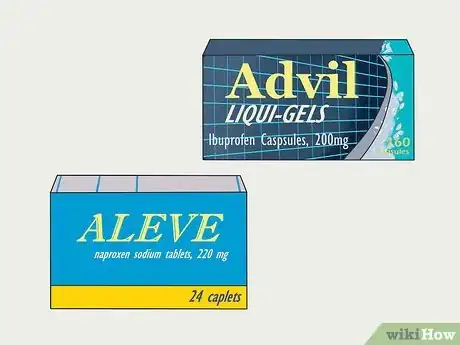





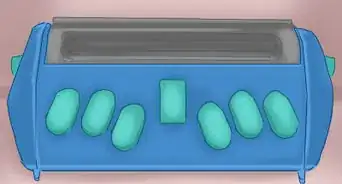


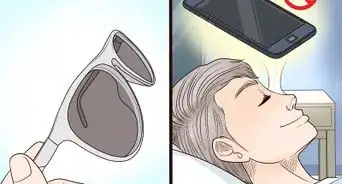






















































Medical Disclaimer
The content of this article is not intended to be a substitute for professional medical advice, examination, diagnosis, or treatment. You should always contact your doctor or other qualified healthcare professional before starting, changing, or stopping any kind of health treatment.
Read More...